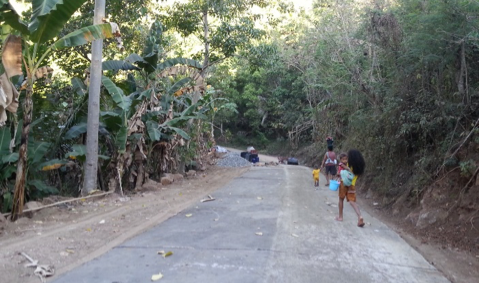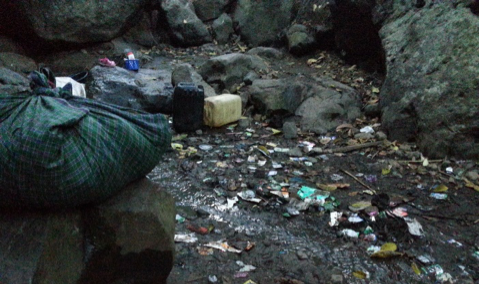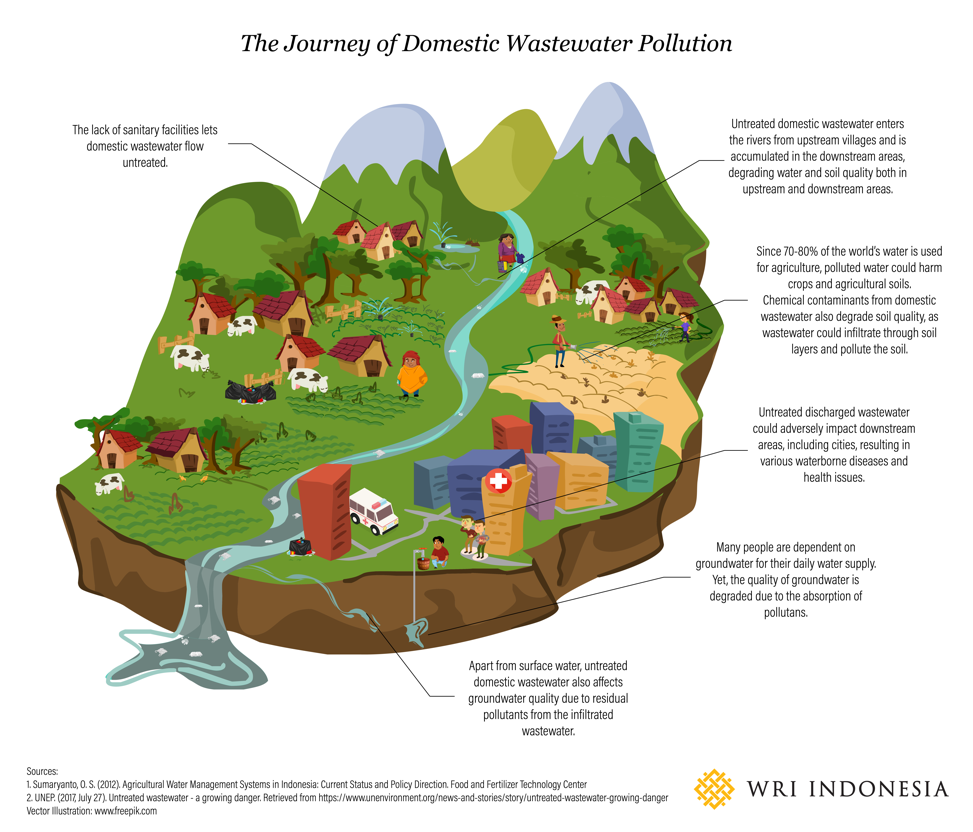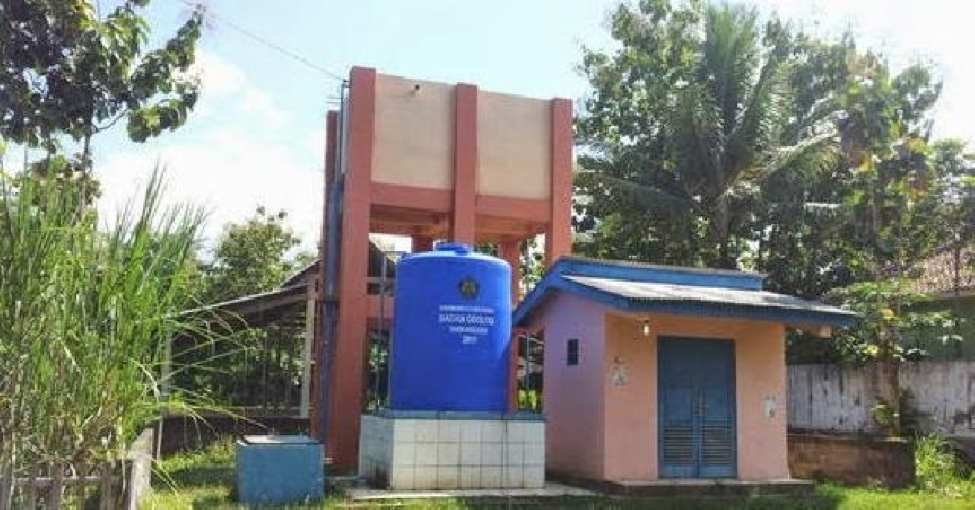How to Tackle Domestic Wastewater Pollution? Start from the Upstream
Every afternoon, the locals in Lembata Island’s Nubahaeraka village in East Nusa Tenggara have to walk downhill for two kilometers to a nearby hot spring to bathe, launder their clothes, and refill water jugs and containers. Like the rest of rural Lembata, which are hilly and dry, access to water is also limited in Nubahaeraka.
Although private latrines are available in most Nubahaerakan houses, wastewater treatment facility is lacking, making the sewage awash with contaminants from the ubiquitous chemical-based personal care and household products used by the locals. Assuming an average 15 liters of daily water consumption among rural communities, Nubahaeraka may annually produce 1,898 m3 of domestic wastewater or almost twice the water volume of Segara Anak Lake in Mount Rinjani.

The afternoon ritual of villagers in Nubahaeraka. Photo: Dimas Fauzi/ WRI Indonesia

Litter around the hot spring near Nubahaeraka. Photo: Dimas Fauzi/ WRI Indonesia
Untreated sewage is harmful to animals, plants for agriculture, and damages human health. Domestic wastewater often contains chemical compounds and excessive nutrients, such as phosphates, nitrates, and ammonium, which could lead to oxygen depletion (eutrophication) in water bodies, therefore influencing the aquatic ecosystem. Additionally, waste from human excretion contains bacteria and virus that could cause waterborne diseases.
Nubahaeraka is hardly alone in facing this water problem. According to the Ministry of National Development Planning, only 54 percent of rural populations have access to proper sanitation. Besides, domestic wastewater has been polluting 68 percent of rivers in Indonesia, as per a 2015 report by the Ministry of Environment and Forestry. The problem is worse in downstream villages and cities, where chemical contaminants from many upstream rural areas are accumulated. Therefore, mitigating environmental degradation from domestic wastewater pollution, especially from rural upstream areas, is essential.

Illustration: Adelina Chandra/WRI Indonesia
Steps Toward Proper Water and Sanitation Access
Globally, water and sanitation issues have been included in both the Millennium and Sustainable Development Goals (MDGs and SDGs). The Indonesian Government, too, includes access to clean water and proper sanitation in its national mid-term development plan (RPJMN) that highlights a target to achieve 100 percent access to sanitation by 2019.
As exemplified in the case of Nubahaeraka Village, wastewater pollution occurs not only due to the lack of wastewater treatment facility. Rather, the villagers may lack clean water access, leaving them with no choice but to go directly to the water source to do their household chores, polluting the water body by doing so.
In such situation, clean water infrastructure such as simple water treatment (e.g. water filtration) and distribution system (e.g. piping to residential areas) should be established. Ensuring the availability of clean water infrastructure will reduce direct household activities at the water sources, therefore diminishing the risk of environmental degradation along water body. Once people have access to clean water, basic sanitation and wastewater treatment facilities should be built nearby the residential area.
In Indonesia, the government has been implementing various sanitation interventions, such as National Rural Water Supply and Sanitation Program (PAMSIMAS) in villages across the country. The PAMSIMAS initiative aims to provide drinking water access and community-based sanitation as well as building waste treatment facilities. Yet, it is not always the case that PAMSIMAS could address domestic wastewater treatment, partly due to its implementation that mainly focuses on water access, open defecation eradication and proper handwashing.

Example of PAMSIMAS Facility Source: http://jurnalmadani.com/assets/berita/18233767990-ilustrasi_3.jpg
A Bottom Up Approach
The success of all sanitation-related interventions, including PAMSIMAS, is dependent upon people’s awareness to maintain proper sanitation and hygiene practices, especially since it applies a behavioral change approach in its program design.
One of the requirements for behavioral change approach is by letting the people know about the component of their untreated water. However, WRI’s study found that despite the transparency regulation, information related to water pollution in Indonesia and some other Asian countries is still limited. Therefore, such behavioral change can be started with proactively disclosing water pollution information.
The information can be disseminated through the established public facilities in the village, such as local child and maternal care unit (Posyandu), community healthcare facility (Puskesmas) and village office. Besides, it is also necessary to have local champions, such as midwives, health facilitators and local leaders within traditional customary system, to proactively inform the public on the water pollution and the importance to treat domestic wastewater to local communities. Not only will these champions inform the public, but they will also help set domestic wastewater issue in the village government’s agenda and budget, including through Dana Desa or Village Fund scheme.
Protecting the environment from domestic wastewater pollution is a collaborative effort that requires strong, continuous support from all relevant stakeholders, especially at the local level. More importantly, changes in a bottom-up fashion may increase the effectiveness of the effort. If we care about the wastewater situation in Nubahaeraka and countless other rural areas in Indonesia, let us incorporate proper sanitation and hygiene practice into our daily life and spread the word about the importance of protecting our water resources through effective sanitation and wastewater treatment.